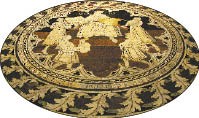Parnassus: home to the Muses, sacred to Dionysus and Apollo, and generally a center of creative activity. Also known as New Orleans. Creativity is part of the air you breathe in this mythological city. The street names, the mispronunciation of street names — ride the streetcar just to listen to the conductor. Locals dedicate entire rooms to costumes in this City of Festivals. Wandering is the best way to see it. That’s when you run into the milliner or the sno-ball stand that uses Louisiana cane sugar. Wander on your bike. Just recognize that the city was built on a swamp, so there are lots and lots and lots of potholes. And don’t be alarmed by how many people talk to you — it’s a stoop city.
So how does one break it down in a city so filled with … history/bon vivance/inspiration and food? By neighborhood.
Let’s start with the Bywater. There is a strong tinge of mini-Williamsburg to the neighborhood, but this section of the Ninth Ward is mostly residential, populated with Creole cottages and shotguns, with the little coffee shop here and the little junk store there. I’m a big fan of Booty’s Street Food, a virtual global food truck fest for around $10/dish. They have “globally inspired cocktails” and, say it with me, Stumptown coffee. Slick interior with friendly staff, outdoor seating and plenty of bike racks and dog bowls, and arguably the most interesting bathroom in New Orleans — the Bywaterloo, a set of washroom galleries curated by the owner, a travel journalist. Other places to check out include Bon Castor, with locally handmade goods; Maurepas, doing the local purveyor and hand-crafted cocktail thing, and well; Satsuma, the coffee shop and juice place; and two of my all-time favorite places in New Orleans — Elizabeth’s and Bacchanal Wine. Elizabeth’s I can’t even begin to suggest something. They take all the usual suspects — po’boys, eggs Florentine, shrimp and grits — mix them up, throw in some surprises, and everything is done to exact measure. I have a romance with Bacchanal Wine. Think wine shop with an elaborate backyard of all the leafy trimmings, lit by a lone strand or two of Christmas lights, well-curated live music on a rickety stage, and affordable and divine small plates that change frequently.
 Lesley Young
Lesley Young
New Orleans is the City of Festivals.
Next, the Faubourg Marigny (pronounced FO-burg MAR-i-nee. “Faubourg” means “suburb.”) It sits next door to the Bywater and is also mostly residential with some great neighborhood establishments. Mimi’s in the Marigny was voted Best Bar in New Orleans by the Gambit. I’m pretty sure that says a lot. A two-story corner bar, Mimi’s has the hipsters and millennials and long-time locals and seersuckers and tattooed faces and artists, walls of windows, a pool table and dart board, and food. The best tapas this side of the Atlantic, in fact. Just close your eyes and point to something on the menu, and you’ll be grand. The Orange Couch is a great little coffee shop with mochi Japanese ice cream, and at one point, their Wi-Fi password was “rickjames.”
Cross Elysian Fields to the Marigny Triangle, the real entertainment district. Many say Frenchmen Street has jumped the shark. I do remember the days when reservations were not a must to get into Three Muses, my personal favorite. I had a moment there. Wandering at high tea, I heard a blind Frenchman wafting accordion music out of this little gem, where I later heard Walloonian Helen Gillet chirping French chansons and playing the cello with a loop. I cried. But it might have been the Warm Chocolate Cream Cheese Brownie. Frenchmen is still quite possibly the best place to hear the best live jazz music in the world. Wander and pop in and out of all the venues. It’s usually only a one-drink minimum. Eat at Adolfo’s, a pocket-sized place with big taste offering Italian Cajun-Creole. You’ll have to wait, but it won’t matter, because you just head downstairs to the equally small Apple Barrel for another hit of phenomenal music.
Well, folks, we’re out of space, so we’ll make our way further upriver another time. In the meantime, I’ll take one for the team and do some more research for you.
Also. Take cash. Some places require it. The musicians live off of it. And it might be someone’s birthday.

